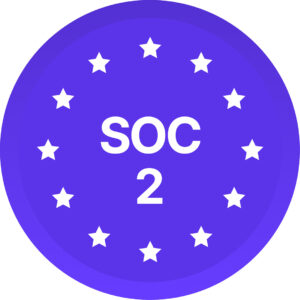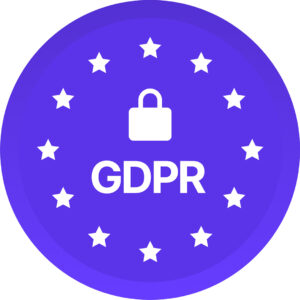Constructing genuinely inclusive workplaces means proactively understanding and welcoming disability diversity. Disability remains an overlooked dimension, yet disregarding it misses immense opportunities for innovation, empathy, and competitive edge.
Disability encompasses visible as well as invisible conditions, including chronic illnesses, mental health, learning differences, and mobility limitations, among others. Each carries distinct needs and barriers in the modern workplace.
In this blog, we’ll journey through different dimensions of workplace disability, uncovering the challenges employees with disabilities face and exploring actionable tips for fostering an inclusive environment.
We’ll peel back the layers to understand what disability means in the modern workspace and how businesses can turn challenges into opportunities for growth and inclusivity.
What is disability in the workplace?
Understanding disability at work begins with seeing how wide it can be. Disabilities are not only physical and noticeable; they often include hidden issues like mental health problems, learning differences, and long-term diseases. Everyone has their issues and requirements in the workplace.
But what does the law say? Around the world, different legal rules safeguard the rights of disabled workers. In the U.S., the Americans with Disabilities Act (ADA) makes sure that reasonable accommodations are made for workers with disabilities and stops them from being mistreated because they have disabilities. Similar laws exist in other countries, like the Equality Act in the UK. These laws share a common goal: to make sure that people with disabilities get the same chances as others at work.
It’s essential to understand these laws. These aren’t arbitrary rules but tools that help workers and employers alike. They show the right way to treat people with disabilities fairly and effectively when we have them in jobs. Learning these principles is the starting point for a fair workplace where everyone’s skills are seen and appreciated.
Challenges faced by individuals with disabilities at work
Picture this: getting through a workday in a world that doesn’t consider your needs. That’s a daily life for a lot of workers with disabilities. They often confront significant challenges: problems with getting around, difficulties in talking, and hidden favoritism.
- Accessibility issues: It’s not just about shared spaces. Yes, a person who uses a wheelchair might have difficulty with stairs, but also consider digital obstacles. Picture the annoyance of someone with poor eyesight trying to use websites that don’t work with screen readers. Making the workplace available to everyone includes both physical & digital parts.
- Communication barriers: Then there are the hidden challenges. For example, a person with trouble hearing might get confused in a meeting if there are no sign language helpers or services that put words on the screen. It’s not just about being there; it’s about participating & clearly understanding.
- Unconscious bias: Here’s the tricky part. Many times, employers & even managers don’t know their preconceived notions. It’s as bad as clear discrimination when these prejudices downplay abilities or accidentally leave someone out of activities.
According to the US Bureau of Labor Statistics, in 2022, only 21.3% of persons with disabilities were employed, compared to 65.4% of those without disabilities. This significant difference shows how these problems can turn into real-life results, impacting job chances and development.
Fixing these problems isn’t just about following rules; it’s about making a workplace where everyone does well. It’s time we change our view to see these problems not just as barriers but as chances to grow into more caring and creative workplaces.
Tips for creating an inclusive workplace for individuals with disabilities
Making a work environment where people with disabilities are welcome involves many ways. It starts with redoing how we pick new workers and ends with a respectful and caring atmosphere.
Here are some actionable tips:
- Adapt recruitment processes: Start at the beginning. Ensure job ads are easy to understand & friendly for people with disabilities. Try using words everyone can understand & give different ways to apply for jobs. For interviews, offer help, such as sign language interpreters or materials in Braille, as needed.
- Enhance physical accessibility: This is a must. Review your office layout. Are there wheelchair ramps? Can workspaces be changed to meet various needs? Minor alterations, like desks that can be changed or office gear designed for comfort, can make a big difference.
- Implement inclusive policies: Make rules that help workers with disabilities. This means work hours that can be changed, working from home, or particular time off rules. These rules help workers with disabilities & make an organization more flexible & robust.
- Promote ongoing education & sensitivity training: This is important for thinking differently. Regular practice sessions can help workers learn about various disabilities & the best ways to give help. It’s about creating understanding & knocking down hidden prejudices.
- Encourage open communication: Create a place where workers can discuss their needs without fear of being judged. Weekly talks & an always-available door can help them know & fix any problems they have.
- Utilize assistive technologies: Invest money into technology that helps workers with disabilities. This can include tools like screen readers & voice recognition programs to more specific communication devices.
- Form a diversity & inclusion committee: Having a separate group to work on diversity & inclusion helps keep these important matters in focus. This group can also be a place to talk for people with disabilities.
Creating a welcoming environment takes ongoing work, not just a single action. It needs dedication, knowledge, and a readiness to change and study. According to the U.S. Department of Labor, organizations that embrace diversity and inclusivity are better positioned to thrive in a competitive business environment. By using these initiatives, employers can create a work environment where every worker feels vital regardless of what they can or cannot do.
What’s next?
We’ve talked a lot about disability at work and learned a lot. We began by explaining what disability includes in seen and hidden work situations. Then, we talked about the laws that help include people with disabilities. Then, we looked into the problems people with disabilities have at work. This includes difficulties getting around, communication problems, and unconscious prejudices.
We went on to easy-to-follow steps for making a workplace welcoming to everyone, which focused on the importance of selecting new workers flexibly, making it more accessible, and regularly teaching the staff. Technology and new ideas also play an essential part, showing how they can help make things more inclusive.
It is important to take action ahead of time to create a more welcoming environment. Every step is essential, whether it’s by making new rules, teaching people, or using technology. Organizations like Diversio, with their data-driven approach and expertise in DEI, can offer valuable guidance in this journey.
On a final note, putting people with disabilities in jobs is not just about following rules. It’s about creating a work area where everyone can do well and help out, no matter how able they are. Let’s embrace this challenge and work towards a more inclusive future.

